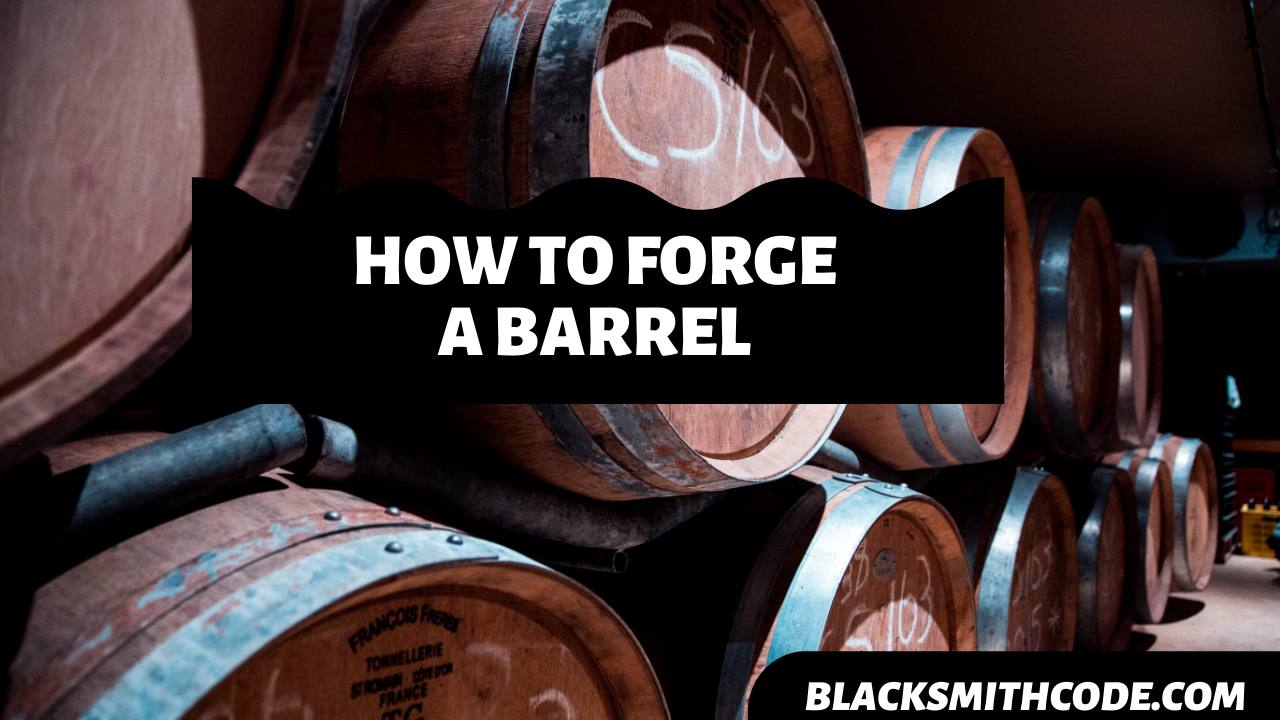Do you know barrels are one of the biggest blacksmith contributions in contemporary arts? Forging barrels is what many blacksmiths crave to know. It is one of the skills and techniques that improve blacksmiths’ value and versatility in their field.
It is a common knowledge that blacksmiths forge weapons like swords and spears. Only a few would have imagined the ability of blacksmiths to forge barrels for rifles and other purposes. This diversity further highlights the reason why blacksmithing is considered to be a versatile profession.
Although forging a barrel might be stressful because of the need for intensive hammering, it is, however, not technical. It would even be easier for expert blacksmiths or those that are already familiar with the forging process.
You can learn the process of forging a barrel in a few steps. Below is a comprehensive guide that can guide even a beginner through the complete process of forging a barrel. However, it would be best if you get familiar with the essential tools and materials.
Essentials
The essentials for the forging process of a barrel include;
Instructions on How to Forge a Barrel
Step 1: Get You Materials
The material and type of steel you are using can influence the forging process. If you are using a steel rod, the process is slightly different from using a flat steel stock. The most important thing is getting material that would perfectly suit your needs.
Step 2: Measure and Cut
One of the crucial things to know about forging barrels is that the process requires accuracy and precision. Cut the suitable barrel length from the steel stock. The measurement is easier if you are using a steel rod; all you have to measure is the length.
Pro Tip
However, you need to measure both length and breadth if you are using a flat steel stock. The breadth is essential because it will determine the diameter of the barrel.
Step 3: Heating
Once you are done with the measurement, prepare the forge for the heating process. You should be aware that the heating process involved in using flat steel is rigorous. It would be best if you kept reheating the material to endure the long hammering.
Quick Steps
- Place the steel stock gently in the forge.
- Add borax or any other suitable flux to the metal to ease the subsequent hammering and ensure proper forge.
- Remove the steel from the forge only when you are sure it has reached a workable temperature.
Step 4: Forming the Barrel / Hammering
Before proceeding, it is essential to be aware that the hammering process involved in the forging process of a barrel is quite rigorous. It will require you to reheat the steel multiple times.
Remember that the basic summary of the process is that you are rolling flat steel into a rod.
Quick Steps
- Remove the steel from the forge once it reaches a suitable temperature.
- Flatten the steel properly and square off the edge to make the rest of the process easier.
- Get a tinny rod (the size of the diameter). This rod will be between the layers of the steel to prevent it from collapsing while rolling.
- Heat the head of the tiny rod and bend it to form a hooker. This process is to ease the removal of the rod from the rod after folding. The length of the rod should be more than that of the barrel steel.
- Proceed by hammering the steel in a bid to fold it. It is essential to note that you should be hammering the steel at almost welding temperature.
- The hammering might take time, and it requires heavy strikes. It is best to use a heavy hammer (3-4 pounds) for the process.
- Be careful with the hammering technique to ensure you are not folding your steel instead of rolling it.
Additional Steps
- The tiny rod you insert will prevent the walls of the barrel from collapsing.
- Keep moving the rod back and forth to ensure that the diameter is intact. You might not have a perfect hole, but you need to have a hole.
- Reheat the steel as often as required until you successfully roll the flat steel into a pipe.
Step 5: Grinding
The edges of the pipe will not be perfect. Therefore, you should use your grinding tool to smoothing the edge of the pipe. However, it would help if you ensure that you don’t shorten the barrel’s length while doing this.
Step 6: Drawing and Boring
This step is to create a free hole in the barrel. The drawing process will create a free hole, while the boring process will add precision to the diameter.
Step 7: Finishing and Polishing
Now, it is expected that you have a barrel of desirable length and diameter. You can now improve the outlook of your barrel with some finishing touches. Clean the surface with a wire brush and polish it if you deem it fit.
FAQs on How to Forge a Barrel
Question
Is it possible to cold forge a barrel?
It is not possible to cold forge a barrel. The process of forging barrels requires plenty of heat and reheating. The only scenario where you might not need heat for the process is using a steel rod. The only thing you need to do is use a drilling tool to make a precise hole.
Question
Can I forge a barrel with bronze and brass?
Forming the shape of a barrel with brass or bronze is not the problem. The problem is that it might not be suitable for some purposes. Therefore, it is not advisable to forge a barrel with brass or bronze.
Question
How long does it take to forge a barrel?
The only time-consuming part of forging a barrel is the hammering. It is time-consuming because you need lots of reheating. On average, you can forge a barrel within 1-2 hours.
Video on How to Forge a Barrel
Warnings
- Use a heavy hammer to avoid excessive hammering fatigue.
- Handle hot steel with tongs to avoid burns.
- Use gloves and other protective gears.





